1. Autonomous Spacecraft Navigation
AI enables spacecraft to navigate through space without constant human control. Autonomous navigation systems use onboard sensors (like cameras, star trackers, and LIDAR) and AI algorithms to detect hazards (such as asteroids or debris) and adjust the spacecraft’s trajectory in real time. This capability is especially critical for deep-space missions where communication delays (often many minutes) make immediate human guidance impossible. By reacting in milliseconds instead of waiting minutes for ground commands, an AI-guided spacecraft can swiftly dodge obstacles and optimize its route. AI-driven autonomy thus increases the safety and agility of spacecraft, allowing daring maneuvers like threading through asteroid belts or exploring uncharted celestial regions that would be too risky under manual control.
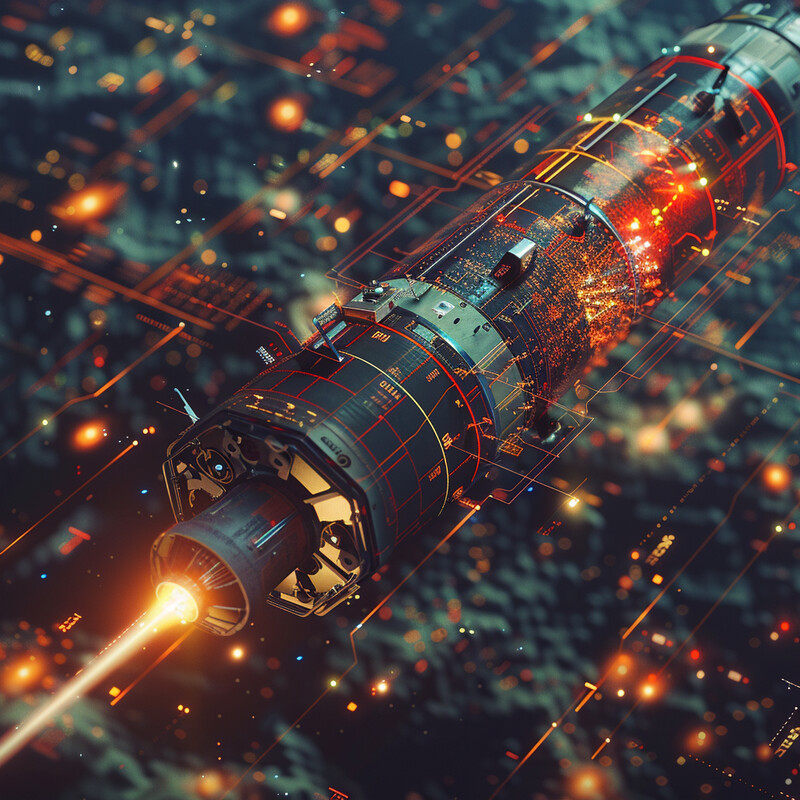
Recent missions demonstrate the effectiveness of autonomous navigation. In 2024, NASA’s Starling project deployed a swarm of four small satellites that navigated and operated cooperatively using AI. After ten months in orbit, the Starling swarm had successfully met all its objectives, using autonomous decision-making to share information and adjust their formation without human input. This achievement showcased AI’s potential in managing complex “spacecraft on the fly” scenarios. Likewise, 2022’s DART mission, which intentionally impacted an asteroid, relied on an AI-powered onboard navigation system to constantly adjust its course toward a 160-meter target at 6.8 million miles away – a feat that would have been infeasible via real-time human guidance. These examples underscore how AI-driven navigation is revolutionizing spacecraft operations, enabling greater mission independence and success.
2. Data Analysis from Space Telescopes
Modern space telescopes generate enormous volumes of data – far beyond what human scientists alone can sift through. AI plays a pivotal role in processing and analyzing these vast datasets to accelerate discoveries. Machine learning algorithms are used to classify celestial objects (stars, galaxies, nebulae) in telescope images and to detect subtle signals, such as the slight dimming of a star when an exoplanet transits in front of it. By recognizing patterns and anomalies in data that might be missed by the human eye, AI helps identify new phenomena more efficiently. This has led to faster cataloging of galaxies and exoplanets, and even improvements in image quality (for example, using AI to enhance the resolution of the first black hole image). In essence, AI acts as an tireless research assistant, combing through cosmic data and flagging the most interesting findings for astronomers.
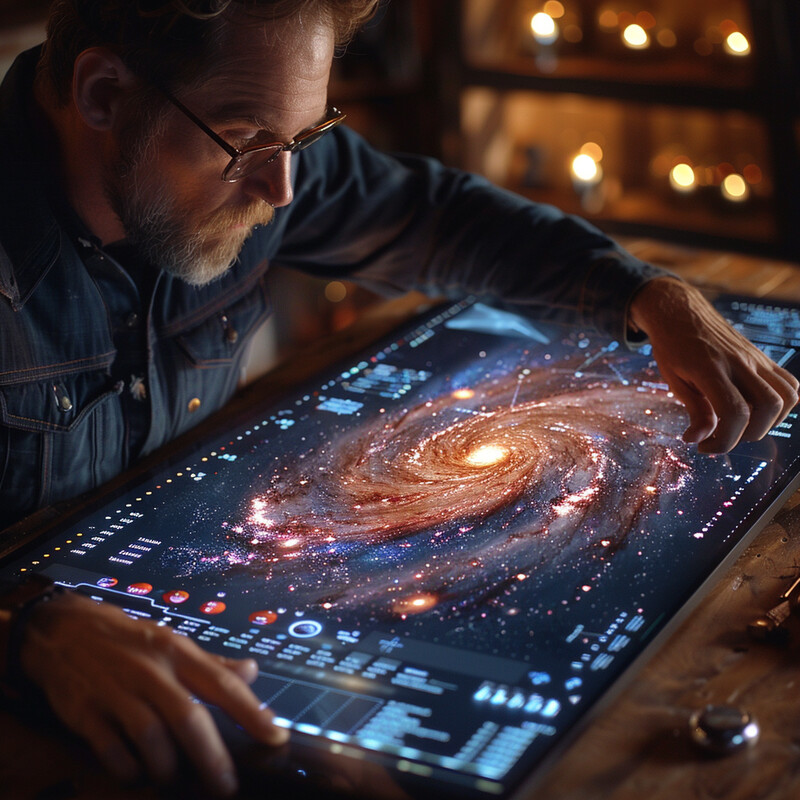
The sheer scale of data from space observatories today makes AI analysis indispensable. For example, the upcoming Vera C. Rubin Observatory (while ground-based, it exemplifies the data challenges faced in astronomy) will produce about 0.5 exabytes of data in its first 10 years of operation – roughly 50,000 times the information in the entire Library of Congress. Dozens of telescopes, including NASA’s space telescopes like Hubble and James Webb, now routinely rely on AI algorithms to handle data influx. In fact, there are at least 20 major telescopes with mirrors over 6 meters, and astronomers acknowledge that AI is the only way to cope with the exponential data growth in astronomy. This approach has already yielded results: machine learning techniques have helped discover new exoplanets in Kepler telescope data and identified distant galaxies in Hubble and James Webb imagery far faster than manual methods.
3. Rover Autonomy on Planetary Surfaces
AI endows planetary rovers (like those on Mars) with the ability to make decisions on the ground, dramatically extending their reach and productivity. An AI-driven rover can analyze its immediate surroundings via cameras and sensors, then choose the safest and most science-rich paths to travel – all without waiting for daily instructions from Earth. This autonomy means rovers can navigate tricky terrains (rocks, sand dunes, craters) by themselves, stopping or detouring when they detect hazards like large boulders or steep slopes. In addition, onboard AI systems allow rovers to conduct scientific experiments automatically: for example, selecting interesting rock targets to analyze with their instruments based on pre-taught criteria. By optimizing driving routes and science targets in real time, AI helps rovers cover more ground and gather more data during each Martian day, ultimately increasing the mission’s scientific return and longevity.
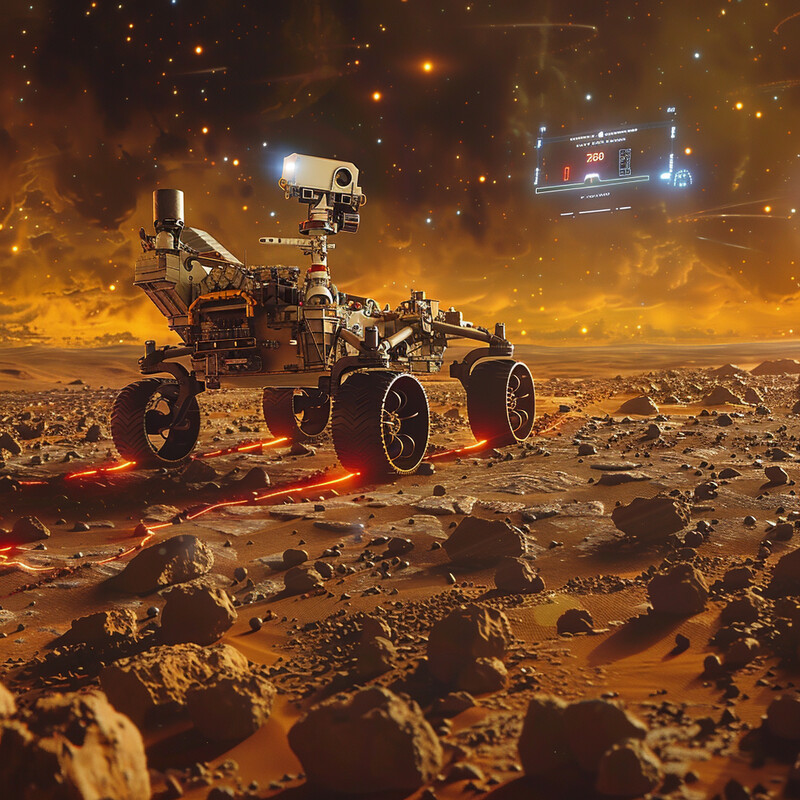
Mars rover operations illustrate the impact of AI autonomy. NASA’s Perseverance rover, which landed in 2021, uses an advanced autonomous navigation system called AutoNav. In its first Martian year of service (~2 Earth years), Perseverance drove about 17.7 km, and remarkably 88% of that distance was evaluated and traversed using AutoNav without human oversight. This is a huge leap over past missions – for comparison, the older Opportunity rover managed only ~2.4 km of autonomous driving in its entire 14-year lifetime. Thanks to AI, Perseverance has set new records on Mars: it achieved the longest autonomous drive in a single Sol (Martian day) at 347.7 meters, and it also completed the longest ever continuous drive without human intervention at 699.9 meters. Moreover, Perseverance’s AI-powered science system (AEGIS) can independently select and analyze targets with its SuperCam instrument, conducting experiments immediately after a drive without waiting for Earth commands. These milestones demonstrate how AI autonomy is enabling rovers to explore more efficiently and safely than ever before
4. Life Support Systems Management
AI plays a crucial role in managing life support systems aboard crewed spacecraft and space stations, where maintaining a stable habitat is literally a matter of life and death. These systems regulate breathable air, drinkable water, temperature, and pressure for astronauts. AI can continuously monitor a myriad of sensor readings – such as oxygen and CO₂ levels, humidity, water reserves, and air temperature – and make real-time adjustments to keep conditions optimal. For instance, an AI controller might increase the output of an oxygen generator if it predicts a drop in O₂ during heavy exercise by the crew, or reduce cooling if it detects an astronaut sleeping (to save energy). AI algorithms also predict usage patterns, ensuring that recycled water and air systems adapt to the crew’s needs over time. Importantly, by detecting anomalies or leaks in these closed-loop systems early, AI can alert the crew or trigger backup systems before a minor issue becomes an emergency. This smart management optimizes resource utilization (which is critical on long missions with finite supplies) and enhances crew safety and comfort.
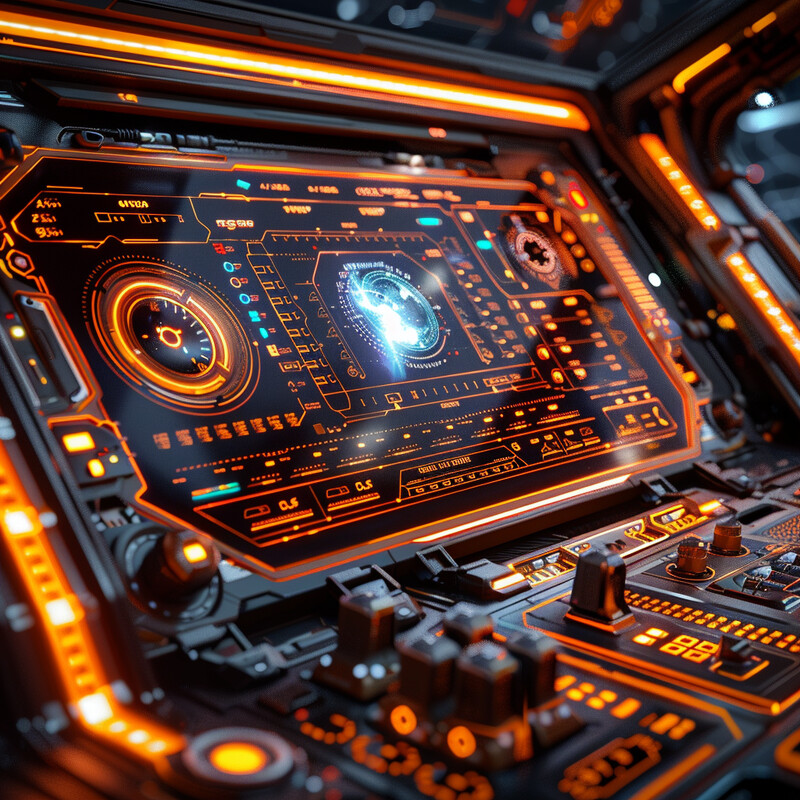
Advances in space life support are hitting efficiency milestones with AI-driven oversight. In 2023, NASA reported achieving a 98% water recovery rate in the Environmental Control and Life Support System (ECLSS) on the International Space Station. This means 98% of the water (including humidity condensate and even urine) is now recycled into drinkable water – a level approaching the closed-loop recycling needed for missions to Mars. Such efficiency was attained by automated monitoring and adjustment of filtration systems, something that intelligent control software excels at. AI’s predictive abilities also help: for example, it can forecast how quickly filters will clog or when CO₂ scrubbers will reach saturation, allowing timely maintenance or adjustments. NASA uses the ISS as a testbed for these AI-managed life support technologies, which will be essential in upcoming deep-space habitats. The goal is to make future life support self-regulating and nearly 100% regenerative, minimizing resupply needs. This progress in 98% recycling demonstrates that AI-managed systems can dramatically stretch limited life support resources
5. Predictive Maintenance for Spacecraft
Predictive maintenance refers to using AI to anticipate equipment failures before they happen, so that repairs or adjustments can be made proactively. In spacecraft, this is transformative – replacing components or fixing issues in orbit is extremely difficult, so predicting problems is far better than reacting to them. AI systems continuously analyze telemetry data from spacecraft subsystems (like power units, thrusters, computers, and instruments) to detect subtle warning signs of wear or malfunction. For example, a slight increase in a motor’s electrical current or a minor change in a sensor’s output pattern might signal an impending problem. Machine learning models, trained on both normal and faulty behavior, can flag these anomalies. By scheduling maintenance (or rerouting tasks) based on AI forecasts, mission controllers can prevent unplanned downtime. This reduces the risk of mission failure due to sudden equipment breakdown and can extend the operational life of satellites and spacecraft. In summary, AI-driven predictive maintenance turns maintenance from a reactive, routine-based process into a dynamic, data-driven one where issues are solved before they impact the mission.
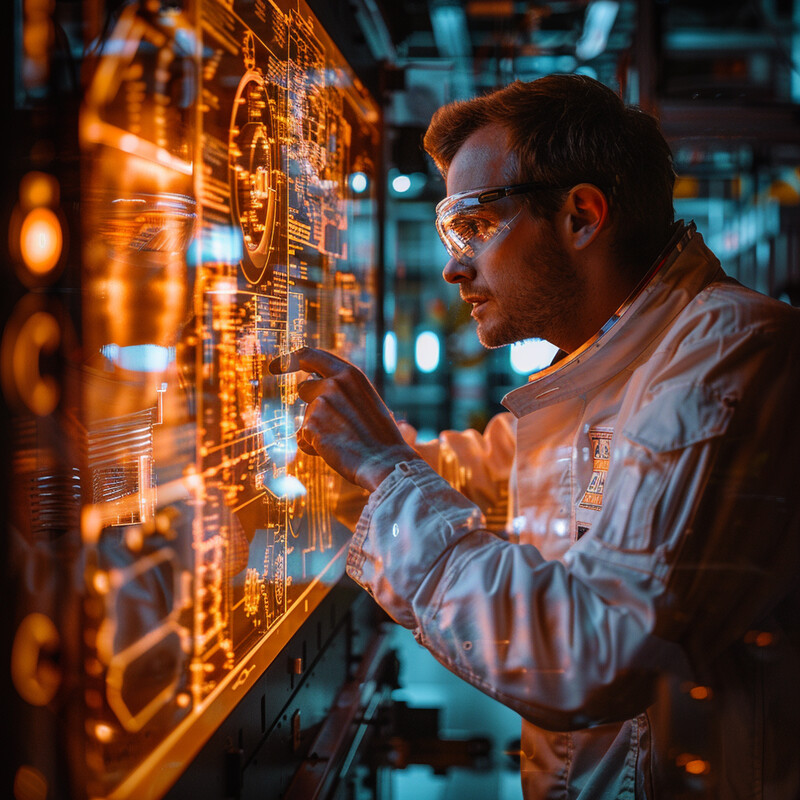
Operational satellites are already benefiting from AI-based predictive maintenance. For instance, NOAA’s latest GOES-R series weather satellites employ an AI system called AIMS (Advanced Intelligent Monitoring System) to safeguard their instrumentation. AIMS constantly analyzes telemetry from the satellite’s sensors and subsystems, automatically detecting any deviations from normal performance. In one report, the GOES-R team noted that this AI can identify abnormal patterns and predict component failures in a matter of minutes or hours – tasks that previously took engineers days. By catching anomalies early, the AI has helped avoid disruptions: the GOES-R satellites have enjoyed improved uptime and mission continuity because maintenance teams can fix or reboot subsystems before they fail. This approach also extends satellite lifespans by preventing minor issues from cascading into major ones. Such successes are leading other operators (including the U.S. Space Force for its GPS and communications satellites) to integrate similar AI diagnostic tools. In short, predictive maintenance powered by AI is becoming a standard for increasing the reliability of critical spacecraft
6. Enhanced Communication Systems
Communicating across the vast distances of space – whether between astronauts and Earth or between a probe and mission control – is fraught with challenges like signal delay, interference, and limited bandwidth. AI is improving space communication networks by making them more efficient and robust. One way is through adaptive signal processing: AI algorithms can filter out noise and sharpen signals received from distant spacecraft, resulting in clearer data and fewer dropped communications. Another application is dynamic bandwidth allocation, where AI predicts when a spacecraft will have large data to send (such as a burst of high-resolution images) and allocates more channel capacity at that time, then scales back when not needed. AI is also used in cognitive radio systems – these allow satellites or landers to automatically find the best frequency channels to transmit data, avoiding interference and dead zones. Additionally, AI-based compression techniques can pack more information into the same radio signal, effectively increasing data throughput without needing more power or bandwidth. Collectively, these AI-driven improvements mean faster, more reliable communication links, which is crucial for both routine mission operations and time-sensitive emergency messages.
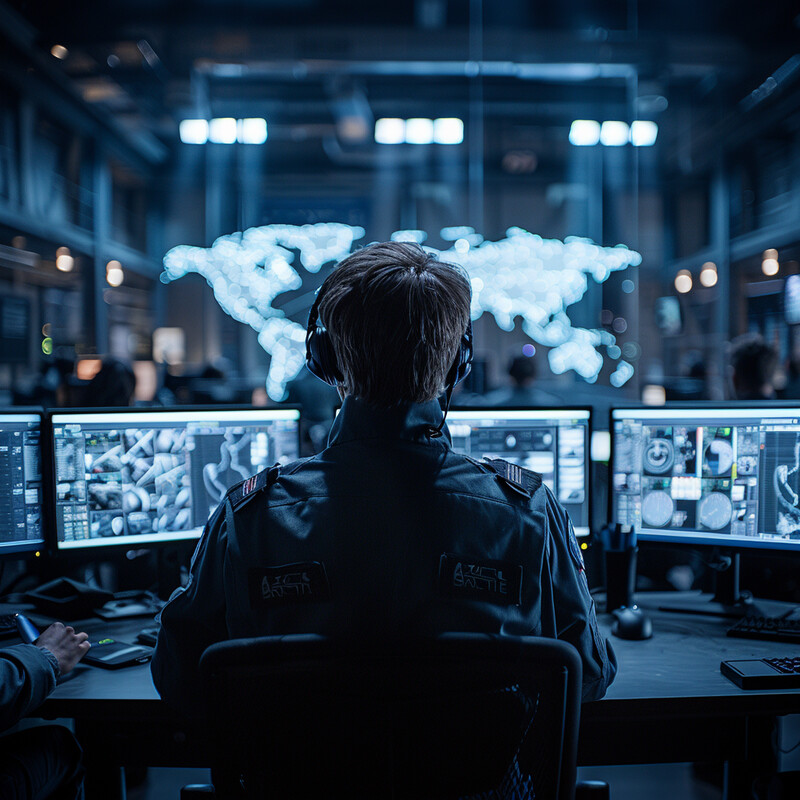
The satellite communications industry has recognized that AI can significantly boost the performance of space networks. A 2024 industry white paper highlighted that artificial intelligence makes satellite communications more efficient, reliable, and secure by optimizing network operations. Concretely, AI can perform dynamic spectrum management – automatically adjusting how frequencies are used among satellites to minimize interference and maximize data rates. This ensures, for example, that a busy scientific satellite gets priority bandwidth while an idle one yields capacity. AI-based interference detection is another key tool: networks like NASA’s Deep Space Network and commercial operators are deploying machine learning to quickly identify sources of radio interference and re-route signals or tweak frequencies, maintaining clear communication channels. Importantly, AI can also enhance data compression and error correction during transmission. By compressing data smarter and predicting/correcting errors in transit, the effective throughput increases and latency drops. These advances have real outcomes – for instance, tests show AI-managed communication links can reduce transmission delays by a significant margin compared to traditional methods. As missions venture further (to the Moon, Mars, and beyond) with greater data needs (think HD video from Mars), such AI-driven communication systems are becoming essential
7. Astronaut Health Monitoring
Keeping astronauts healthy during missions is a top priority, and AI is becoming a critical component of medical monitoring in space. On spacecraft or space stations, astronauts wear biomedical sensors that track vital signs like heart rate, blood pressure, oxygen saturation, and even brain waves or stress hormone levels. AI systems continuously analyze this stream of physiological data to spot any early indicators of health issues – much like an artificial doctor on board. For instance, AI can detect irregular heart rhythms or subtle changes in an astronaut’s sleep patterns that might indicate stress or illness. If something is out of the norm, the AI can alert the crew and suggest diagnostic tests or countermeasures (like recommending more hydration or specific exercises). In deep-space missions where immediate telemedicine isn’t available, AI might also guide astronauts through medical procedures by providing step-by-step instructions or by analyzing medical scans (ultrasounds, for example) on the spot. Beyond physical health, AI companions are being explored to monitor mental well-being – by analyzing speech and facial cues for signs of fatigue or mood changes, the system can prompt astronauts to take breaks or engage in relaxation techniques. Ultimately, AI health monitoring acts as an ever-vigilant medic, ensuring that health issues are caught early and managed effectively, which is crucial when help from Earth is days or weeks away.
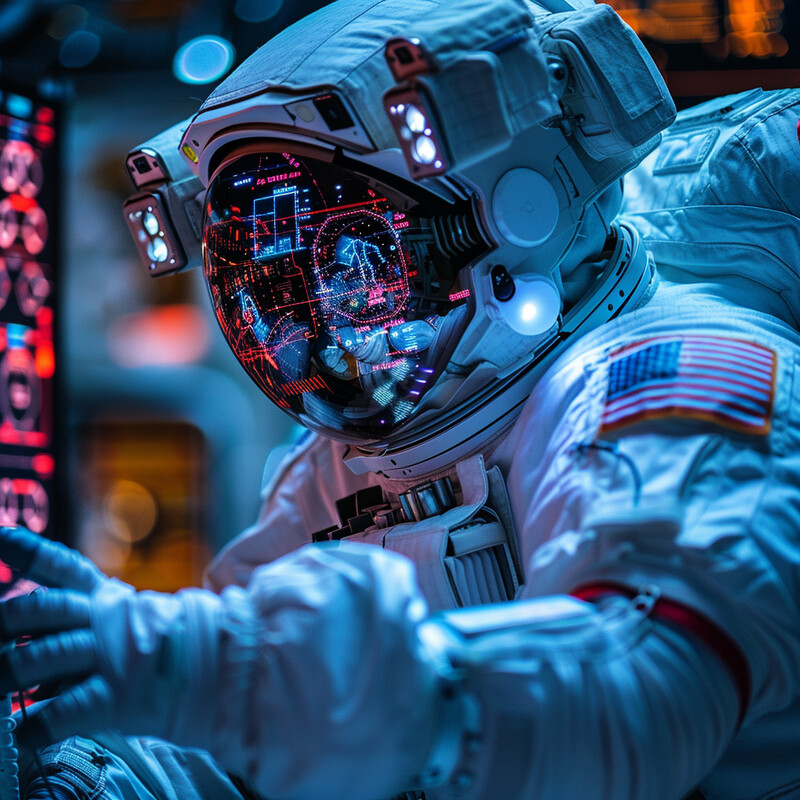
Space agencies are actively researching AI-driven health systems as missions prepare to go farther from Earth. A 2023 editorial in Nature Machine Intelligence noted that in the next era of exploration (think missions to the Moon’s surface, Mars, and beyond Earth orbit), AI will play a central role in autonomous biomonitoring and Earth-independent healthcare for crews. This expectation is backed by ongoing experiments: for example, NASA’s Crew-6 mission to the ISS in 2023 carried over 200 science experiments, several of which tested biomedical monitoring devices and AI analytics for health. One such study involves “Astroytics” – an AI that aggregates various health metrics to predict conditions like dehydration or elevated radiation exposure risk before symptoms manifest. Another involves an AI medical assistant that can interpret ultrasound scans in zero-gravity, which was demonstrated on ISS to diagnose an astronaut’s vein thrombosis. These advancements mean that an astronaut on a multi-month voyage to Mars could have an AI constantly checking their vitals and well-being, issuing early warnings like a drop in red blood cell counts (a known issue in long-duration spaceflight) or increased stress markers. The consensus in recent research is clear: AI-driven health monitoring is critical to enable safe long-duration human space exploration, effectively serving as a “doctor in the loop” for astronauts when real doctors are millions of miles away.
8. Scientific Experimentation
Conducting experiments in space – whether in microgravity aboard the ISS or on the surface of another world – is complex, and AI is helping maximize the scientific output. AI can assist in the design of experiments by running simulations beforehand to fine-tune parameters (for example, predicting the optimal growth conditions for plants in a microgravity agriculture study). During the experiment, AI systems can monitor results in real time: imagine an experiment on protein crystallization on the ISS where an AI watches video of crystal formation and adjusts temperature or solution concentration to improve outcomes on the fly. This kind of real-time feedback loop vastly improves efficiency, as the experiment can be modified continuously to yield the best data, rather than doing a fixed run and analyzing results afterward. AI is also useful for handling the large number of experiments often running simultaneously in space – it can schedule and prioritize tasks for astronauts and robotic lab equipment, ensuring nothing is overlooked. In robotic science missions (like a lander on Mars running chemistry tests), AI enables autonomous execution of experiments based on preliminary findings (e.g., if an analysis shows an interesting chemical, the AI could decide to perform a follow-up experiment). By managing variables and quickly crunching preliminary data, AI-driven experimentation makes the scientific process in space more agile and fruitful.
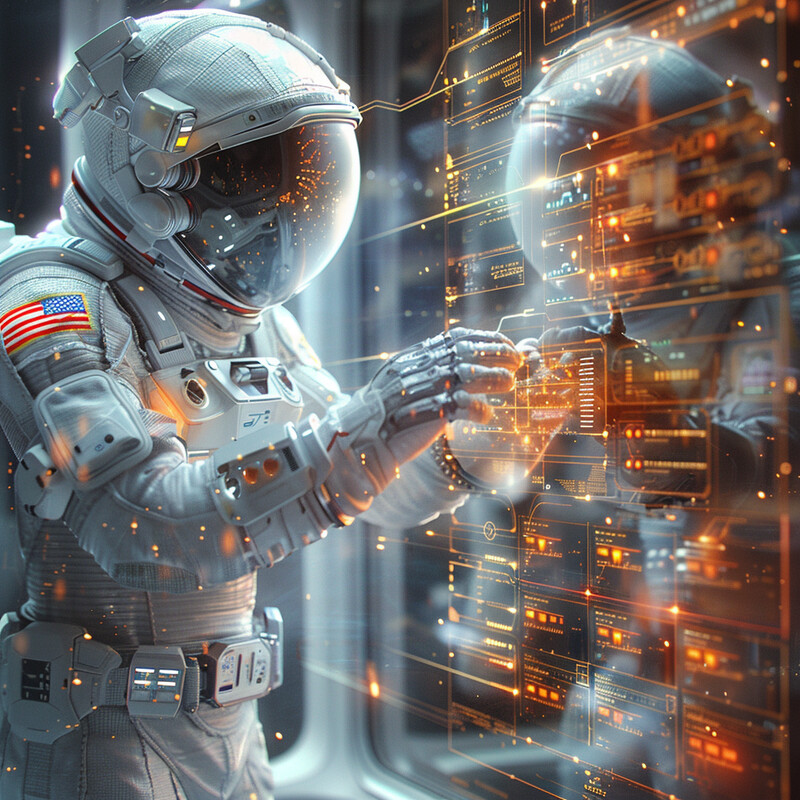
The International Space Station provides a real-world example of how many experiments and data points must be managed – and why AI is increasingly in demand. Throughout 2023, astronauts on the ISS worked on “hundreds of scientific investigations and technology demonstrations,” ranging from biomedical studies to physics experiments in microgravity. In total, over its lifespan the ISS has hosted more than 3,700 experiments, generating an immense amount of data and roughly 500 peer-reviewed publications. Managing this workload is only possible with significant automation: experiment facilities on the ISS like the Cold Atom Lab and the BioFabrication Facility incorporate AI-based controllers to maintain stable conditions (temperature, pressure, etc.) without constant human intervention. For instance, an automated experiment might adjust settings overnight based on intermediate results analyzed by onboard software, so that by morning the crew finds a refined experiment ready for observations. NASA and its partners are also employing AI-driven analytics to comb through experimental data – one recent ISS biology experiment used an AI image analysis tool to examine thousands of images of cell cultures for changes, a task that would take scientists months on Earth. The result of these efforts is evident in the productivity: 2023 saw dozens of cutting-edge results from ISS experiments, underlining that as the volume and complexity of space research grows, AI will be key to orchestrating experiments and interpreting results.
9. Mission Planning and Simulation
Planning a space mission – whether it’s a rover traverse on Mars, a satellite’s observation schedule, or a human lunar landing – involves juggling countless variables and scenarios. AI greatly enhances this planning process through advanced simulation and optimization. Planners can use AI algorithms to simulate thousands of “what-if” scenarios in silico: e.g., testing different launch windows, trajectories, or contingency plans in case of equipment failure. AI-driven simulators can quickly identify the most promising strategies (like the trajectory that uses the least fuel or the schedule that yields the most science given time constraints). For complex missions, automated planning software (often AI-based) can generate detailed timelines for spacecraft activities, ensuring that power, communication, and thermal constraints are all satisfied while accomplishing mission goals. AI is also used in design optimization – for instance, iteratively adjusting spacecraft design parameters to meet mission objectives and constraints, sometimes discovering solutions human engineers might miss. During operations, AI can re-plan on the fly: if a rover finds an unexpected obstacle, an onboard planner AI can reschedule its tasks and route for the day. By handling heavy computational analysis and optimization, AI enables mission designers and controllers to be more ambitious, confident that many potential pitfalls have been simulated and solved in advance.
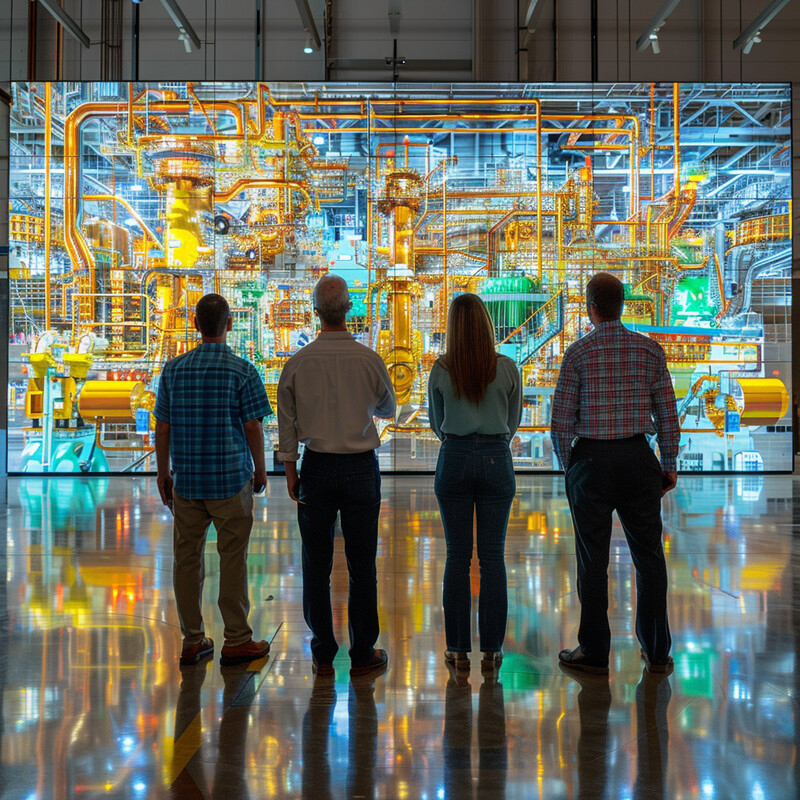
Space agencies have started integrating AI in mission planning with tangible benefits. NASA’s Jet Propulsion Laboratory, for example, has developed AI-based planners for rover missions. One such system, tested for the Mars 2020 Perseverance rover’s scheduling, is known as the Onboard Planner (OBP). According to recent research, OBP’s intelligent scheduling of rover activities could reduce energy usage by up to 20% and allow the rover to complete its science tasks in 25% fewer Martian days (sols) compared to traditional planning approaches. These improvements mean the rover can accomplish more science in a given time and conserve critical resources like battery power – effectively extending the mission’s productive lifespan. In mission simulation, AI techniques have also been used: for instance, engineers employ reinforcement learning algorithms to simulate and optimize spacecraft trajectories for complex multi-gravity-assist routes, sometimes discovering trajectories that use less fuel than standard calculations. AI planning is not limited to robotics; for the upcoming Artemis lunar missions, AI is helping evaluate landing site options by processing enormous lunar terrain datasets and lighting conditions to find safe and scientifically rich landing zones. The bottom line is that AI is becoming a “team member” in mission design teams, able to explore vast solution spaces quickly and improve mission robustness
10. Space Debris Tracking and Avoidance
The space around Earth is increasingly crowded with orbital debris – defunct satellites, spent rocket stages, and fragments from explosions or collisions. These objects pose collision risks to active spacecraft and satellites. AI has emerged as a crucial tool for tracking this space junk and aiding in collision avoidance maneuvers. Ground-based radars and telescopes generate massive surveillance data on tens of thousands of objects; AI can process this data to better predict debris orbits and identify which ones are on course to come dangerously close to valuable assets. Machine learning models improve the accuracy of orbit predictions by learning from past orbital behaviors and perturbations (like atmospheric drag or gravitational influences). When a potential conjunction (close approach) is identified, AI algorithms help decide if and when a satellite should perform an evasive maneuver, optimizing the trade-offs (since unnecessary maneuvers waste fuel and disrupt operations). In addition, AI can assist in active debris removal missions by guiding autonomous robots or drones to rendezvous with and capture debris. By continuously analyzing the ever-changing debris environment and providing rapid guidance for avoidance, AI is key to preventing catastrophic collisions that could generate even more debris (a scenario known as Kessler Syndrome). Essentially, AI is becoming the traffic control system for Earth orbit, keeping satellites and astronauts out of harm’s way.
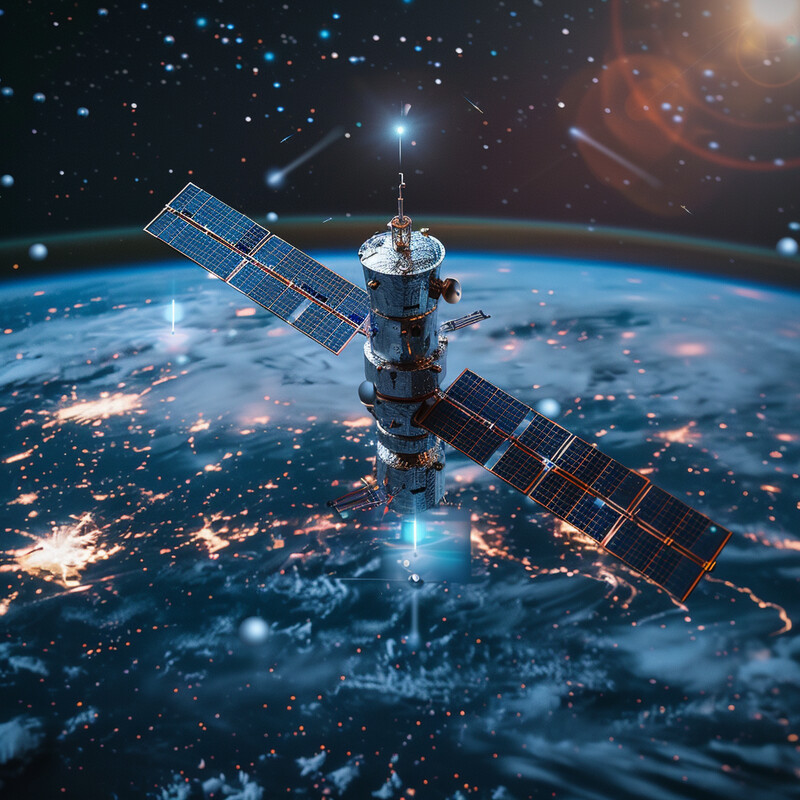
The scale of the orbital debris problem today underscores why AI-driven tracking is necessary. As of mid-2025, an estimated 60,000 pieces of debris larger than a few centimeters are whirling around Earth, according to space surveillance data (this number has ballooned from ~23,000 trackable objects just a few years prior). Statistics show that over half of all collision alerts in low Earth orbit involve these debris objects, as opposed to active satellites. The International Space Station has performed avoidance maneuvers more frequently in recent years – 14 such debris avoidance maneuvers in the last five years alone – to dodge everything from old satellite fragments to pieces of spent rockets. AI systems are now being employed to handle this challenge: for instance, the U.S. Department of Defense is incorporating machine learning to improve its collision warning system for satellite operators, reducing false alarms and honing in on real threats. New startup companies have emerged that use AI to provide conjunction analysis and maneuver recommendations as a service to satellite owners, scanning orbital data faster than human analysts ever could. Without AI, the flood of tracking data (observations numbering in the millions each day) would be unmanageable and collisions would likely increase. With AI, satellites can autonomously adjust orbits with minimal human input – one communications satellite recently used an AI on-board system to initiate a small dodge after ground systems confirmed the prediction. This kind of autonomous avoidance is expected to become standard as we deploy large constellations of hundreds or thousands of satellites that must continuously “swarm” without hitting each other. In summary, AI is now indispensable for monitoring orbital debris and orchestrating timely avoidance maneuvers to protect our space infrastructure